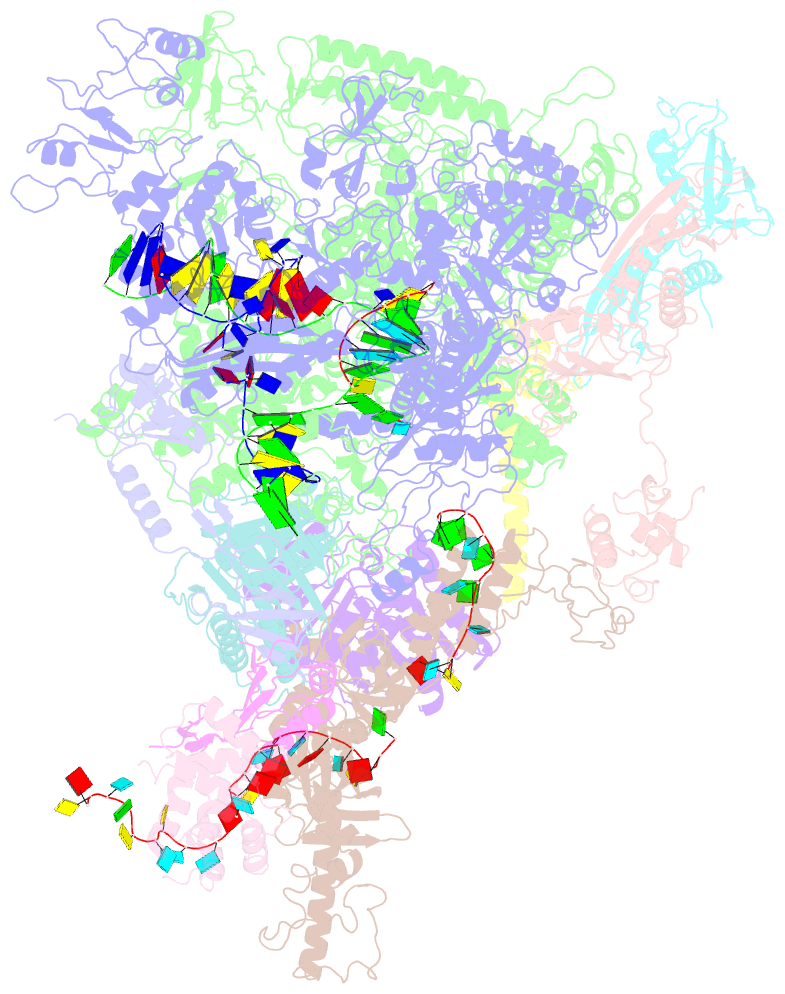Summary information and primary citation
- PDB-id
- 6tqn; SNAP-derived features in text and JSON formats;
DNAproDB
- Class
- transcription
- Method
- cryo-EM (3.8 Å)
- Summary
- Rrn anti-termination complex without s4
- Reference
- Huang YH, Hilal T, Loll B, Burger J, Mielke T, Bottcher C, Said N, Wahl MC (2020): "Structure-Based Mechanisms of a Molecular RNA Polymerase/Chaperone Machine Required for Ribosome Biosynthesis." Mol.Cell, 79, 1024-1036.e5. doi: 10.1016/j.molcel.2020.08.010.
- Abstract
- Bacterial ribosomal RNAs are synthesized by a dedicated, conserved transcription-elongation complex that transcribes at high rates, shields RNA polymerase from premature termination, and supports co-transcriptional RNA folding, modification, processing, and ribosomal subunit assembly by presently unknown mechanisms. We have determined cryo-electron microscopy structures of complete Escherichia coli ribosomal RNA transcription elongation complexes, comprising RNA polymerase; DNA; RNA bearing an N-utilization-site-like anti-termination element; Nus factors A, B, E, and G; inositol mono-phosphatase SuhB; and ribosomal protein S4. Our structures and structure-informed functional analyses show that fast transcription and anti-termination involve suppression of NusA-stabilized pausing, enhancement of NusG-mediated anti-backtracking, sequestration of the NusG C-terminal domain from termination factor ρ, and the ρ blockade. Strikingly, the factors form a composite RNA chaperone around the RNA polymerase RNA-exit tunnel, which supports co-transcriptional RNA folding and annealing of distal RNA regions. Our work reveals a polymerase/chaperone machine required for biosynthesis of functional ribosomes.





